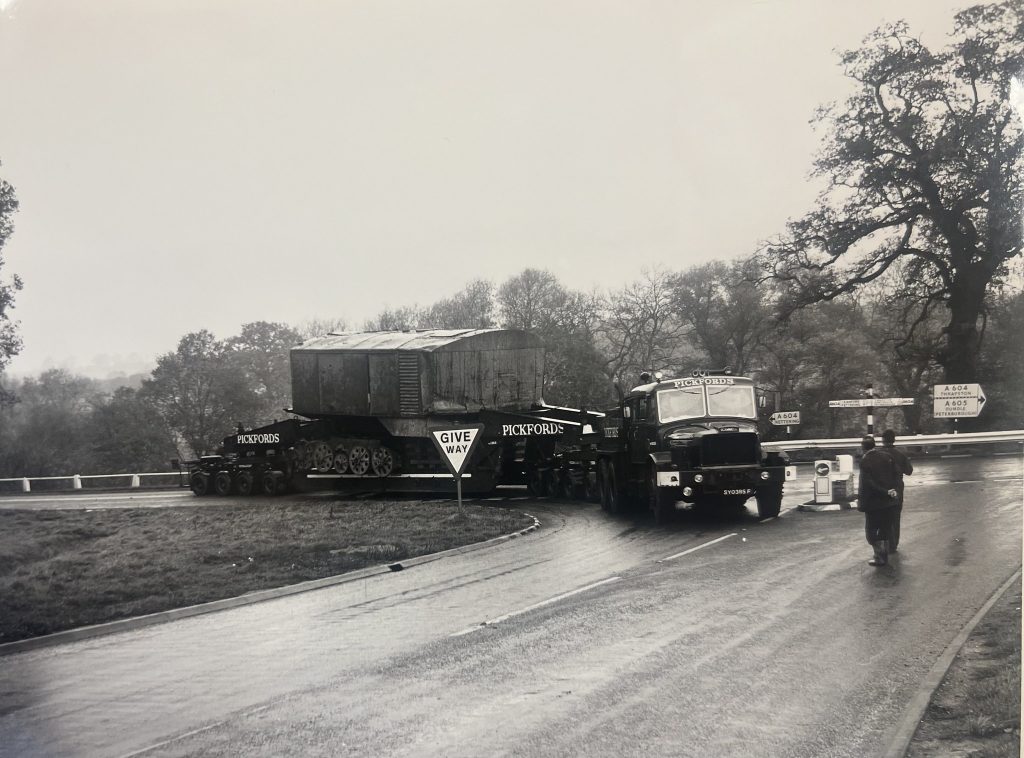
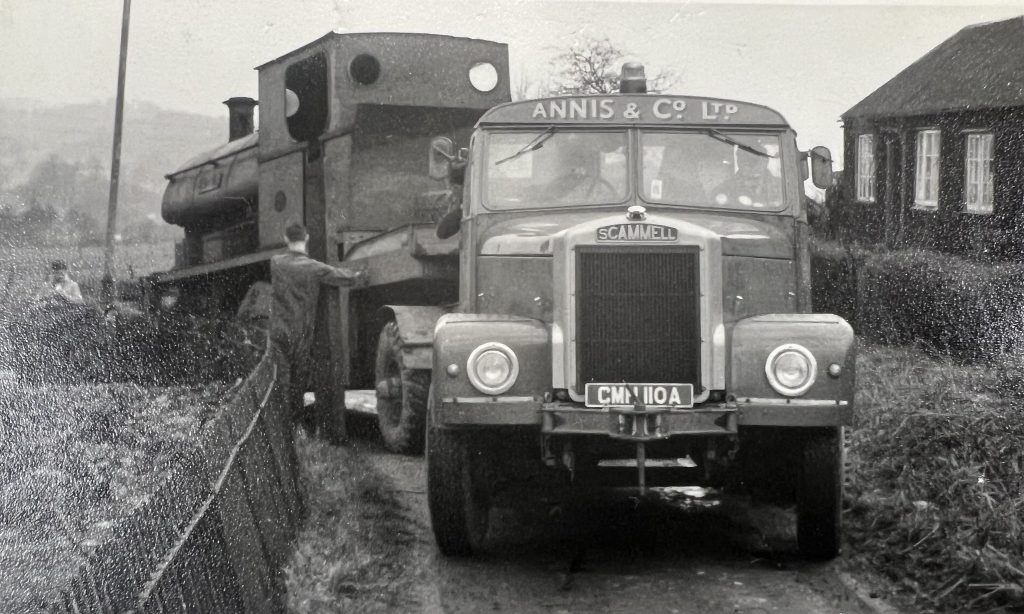
Above the loco which Is suspected to be A E is being delivered, this has to have been between 1919-1924
Cranford mine
Southern mine
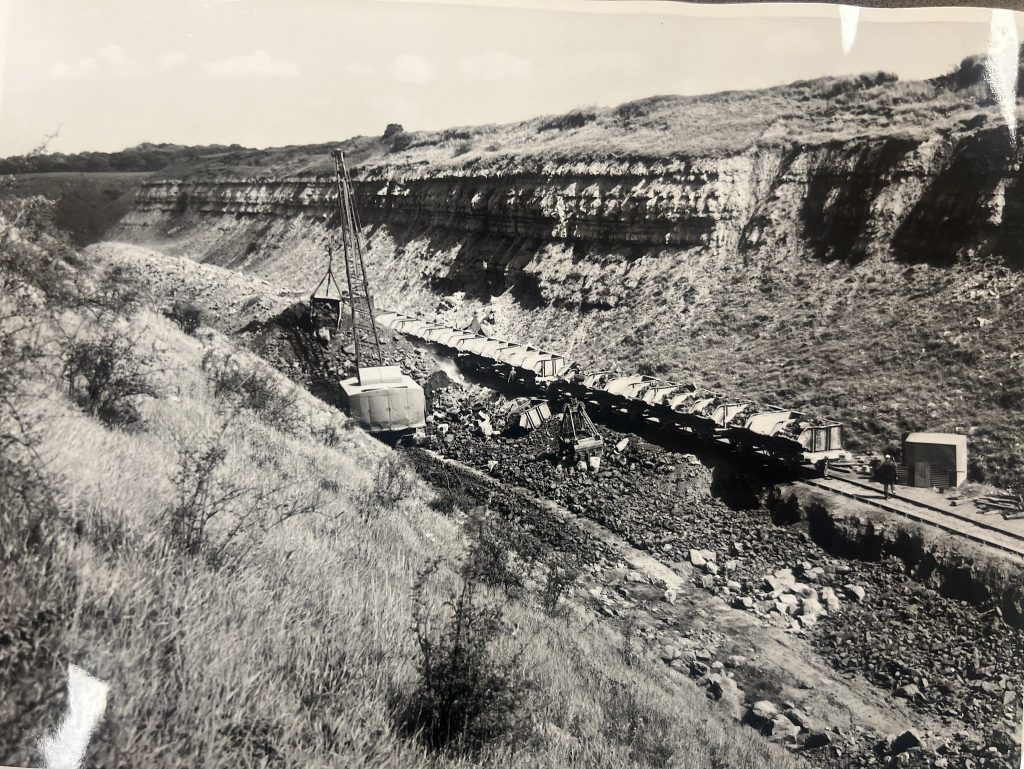
The above cutting is still visible today from the A14 , You can stand where this image was taken on the public footpath
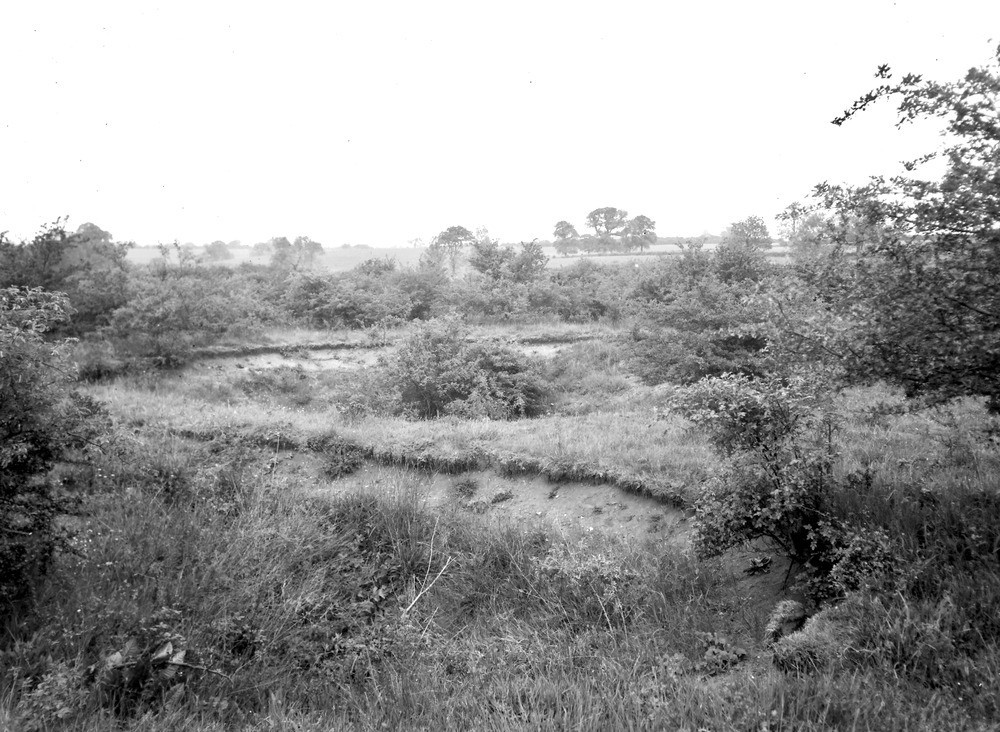
These photos were taken in April 1945, roughly 20 years after closure. The missing band of ironstone is causing large sink holes at the surface where the estuarine limestone has fallen into the voids. Both photos from the BGS archive
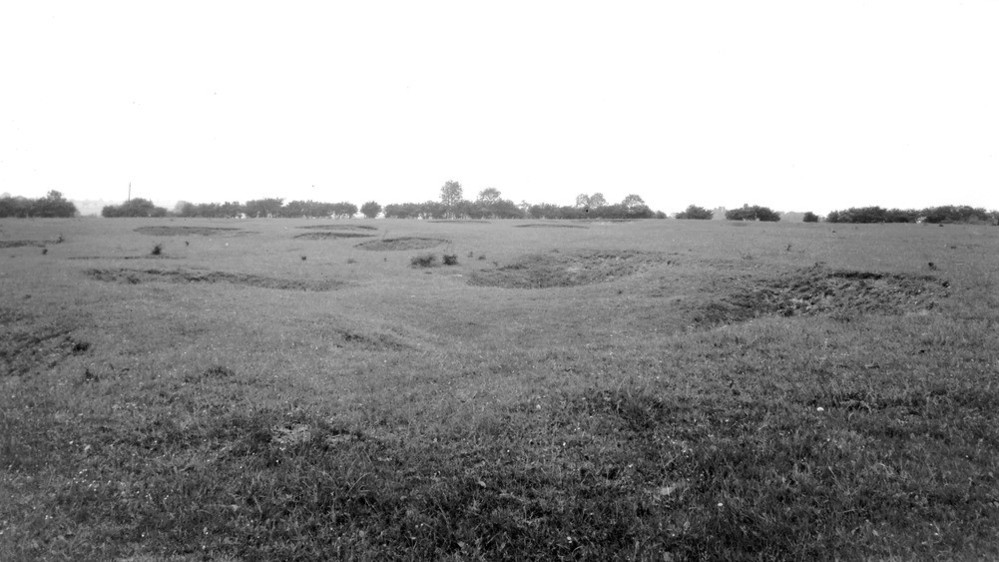
These were Staveleys first ironstone workings in the East Midlands. They had issues of quantity of high end ore supply before this. They turned to the Cranford Hall estate for ore. Cranford Hall estate had been surface mining ore since 1873; in 1875 Cranford Iron Co. took over, this was owned jointly by Staveleys Iron & Coal Ltd and James Oak Ltd. The lease would last for 21 years from 29th September 1874. Documents from 1874 say the ore was already being “got at” presumably from outcrops. The 1884 OS map shows a building on the southern end of the main tramway, possibly a winding house. It is unsure when the pillar and stall mining started; we no in 1888 that two locomotives for the southern region were purchased.
These are very interesting because they were the first built by Markham & Co Ltd, from their Broad Oak works in Chesterfield. They were of a saddle tank design noted as being a firm and sturdy loco covered in hand rivets. The plates on the saddle tanks said Cranford Iron Co. Ltd . The dates on the machine said 1889, we assume this is due to part requirement and this designed continued on.
The footpath in 1895 was moved onto a wooden bridge due to passing a tramway. By now most of the workable stone had been got out and a friendly agreement had been made with the landowner to get the remaining stone out while landscape remedial work started. Clay Cross & Co. stated in 1909 they will get all the remaining ore using their exclusive “pillar and stall system”. By half way through 1913 they had finished. It is listed that a 7ft 9” bed of ore was removed, 1ft being left in place to hold the surface up. One reason for this early finish is suspected to be flooding. In 1959 this flooded mine was nearly breached when surface mining work was taking place. The large head of water still remains somewhere in the open face.
Public footpaths do walk the surface of this mine. No signs are present about the underground workings. Sinkholes do regularly appear.
The North mine
The northern mines were served by an adit next to the loading dock area, this had a dip of 1 in 8 to reach the ore bed. The northern mines had a 1ft 6” serving tramway, and its own calcining plant. A rare feature that is mentioned is its steam engine for the underground endless haulage system.
Inside the mine was a large anchor wheel where the cable fed back around itself, to inside the mine. This had wooden tubs 4ft by 2ft attached to it at 30 yard intervals. Miners unclipped these as required then clipped them onto the ponies which pulled them to the working face. There was only 1 tramway for the tubs at first till later developments created another, Miners entered through pedestrian way entrances, each brought their own lamp with them. The mine was worked on two shifts, the working hours or days haven’t been listed. When ore left the mine and reached daylight, the tub was unclipped and manually pushed to the tippler dock.
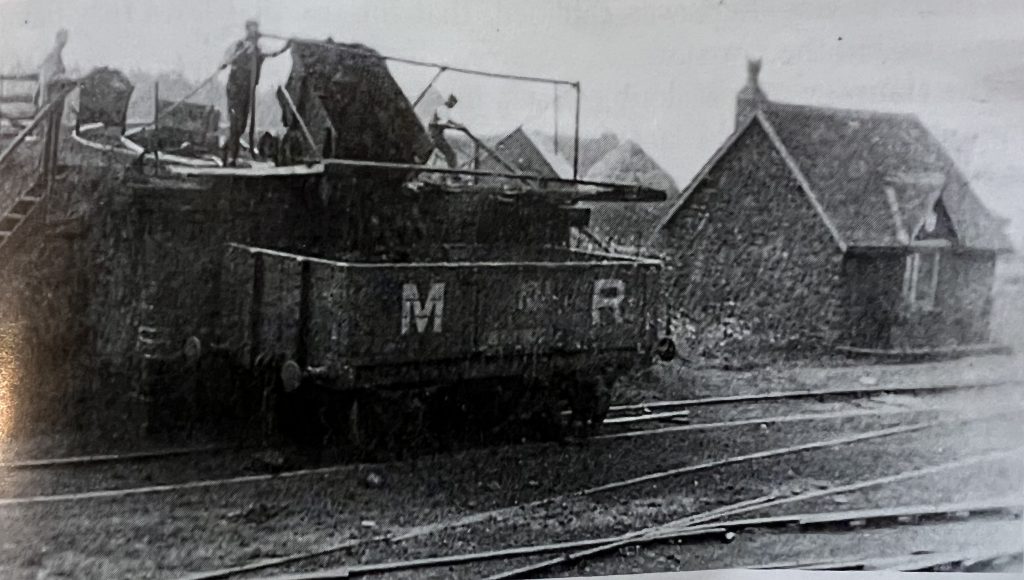
Here the photographer C.T Marlow captured the image at the M.R sidings . We would like to speak to anybody who knows where his collection is now stored .
A larger horse then pulled the larger wagons to the collection point. Both of the sections of the mine were connected by a crudely made telephone system, this was built for stopping the endless haulage system when required. Cranford North had its own 2x ventilation shafts 48ft & 60ft. The Cranford Mines had a well known reputation for pillar robbing and irregular prop use causing further accidents. Mining ceased in 1926; bridges over the streams were removed and tunnels under the highways were stowed, these tunnels was built originally using a 18” brick archway so the cabs on the loco had to be removed off the loco to fit under.
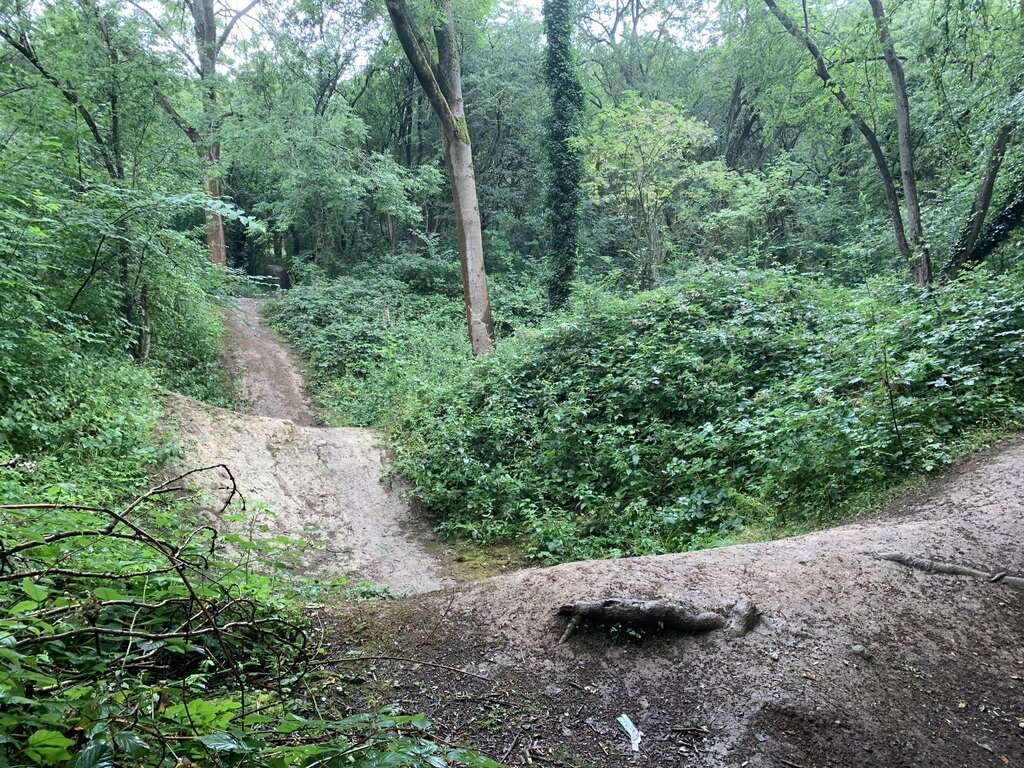
The extent of the pillar robbing on the northern mine can still be viewed today, fresh subsidence is still occurring. It should be remembered the drift is on private property and can not be viewed without permission.
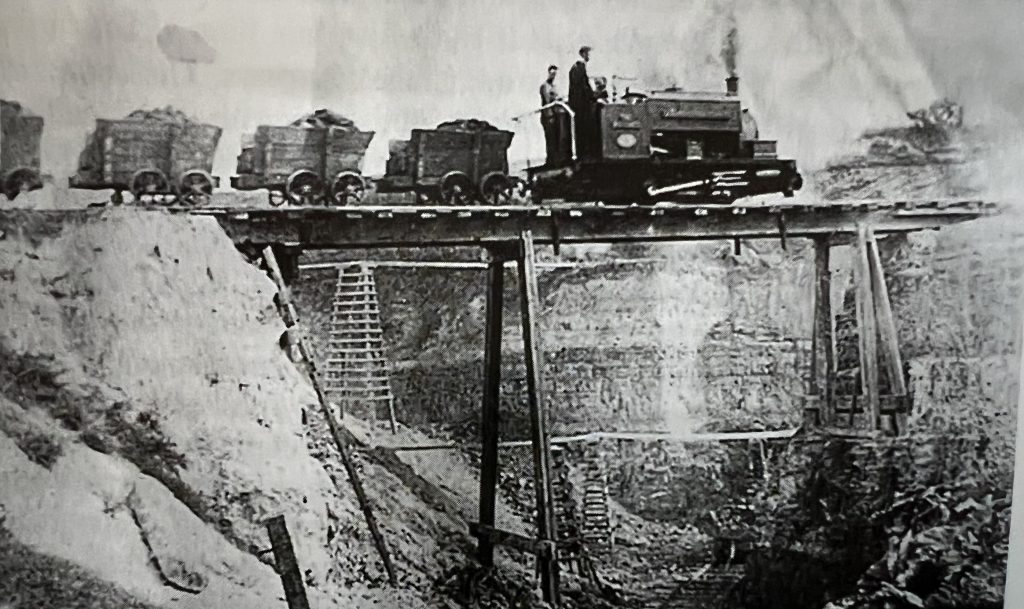
Here in 1890 C.T Marlow captured the Baronet crossing a set of wooden trestles over a deep Cranford ironstone quarry . Note the early style tubs .
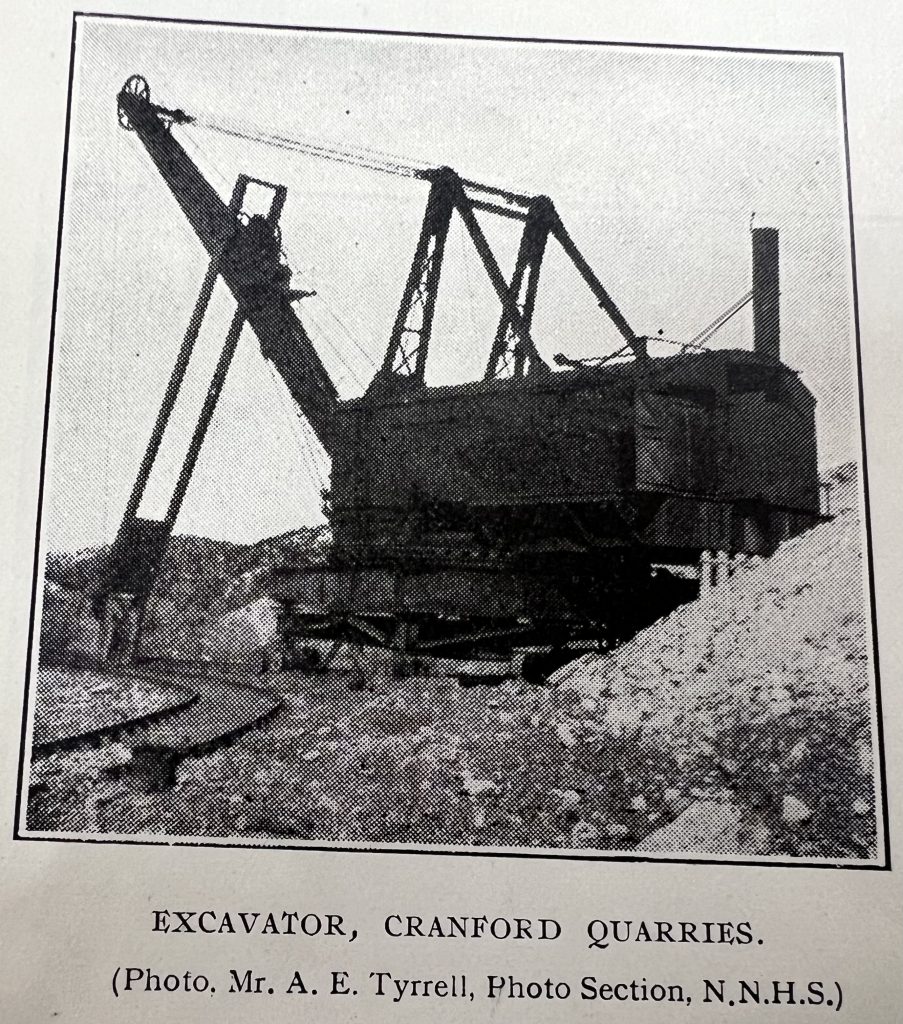
Photo from the 1928 Northampton magazine showing the dragline excavator at work .
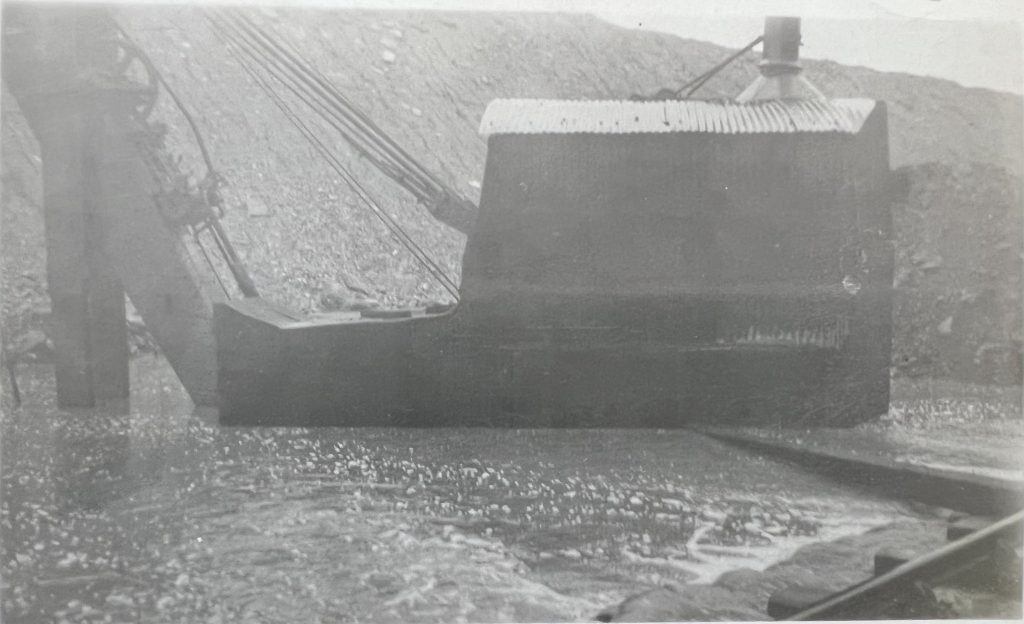
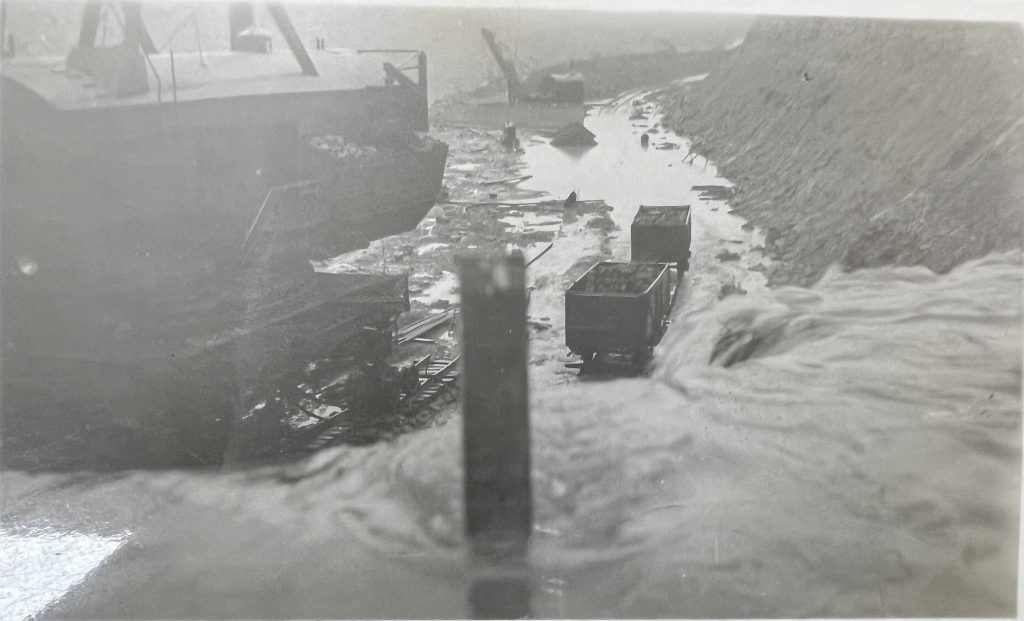
The north side was renowned for always being wet, this can be seen in the images above . date 1957
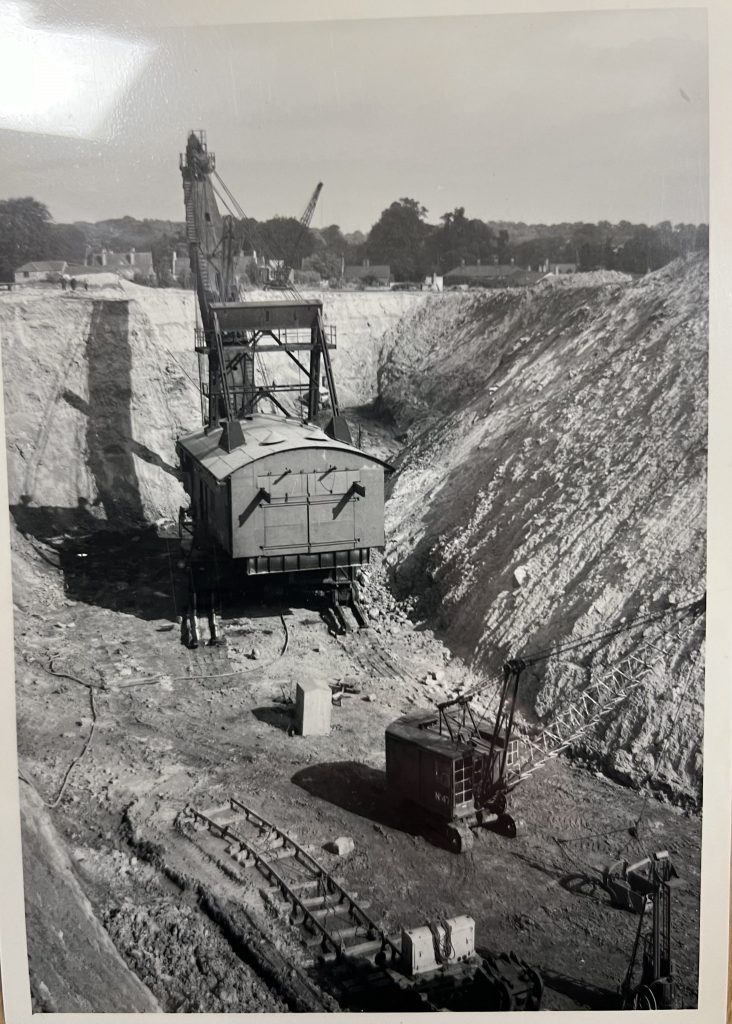
The scale of these draglines can be witnessed by the above image , note the houses in the background .
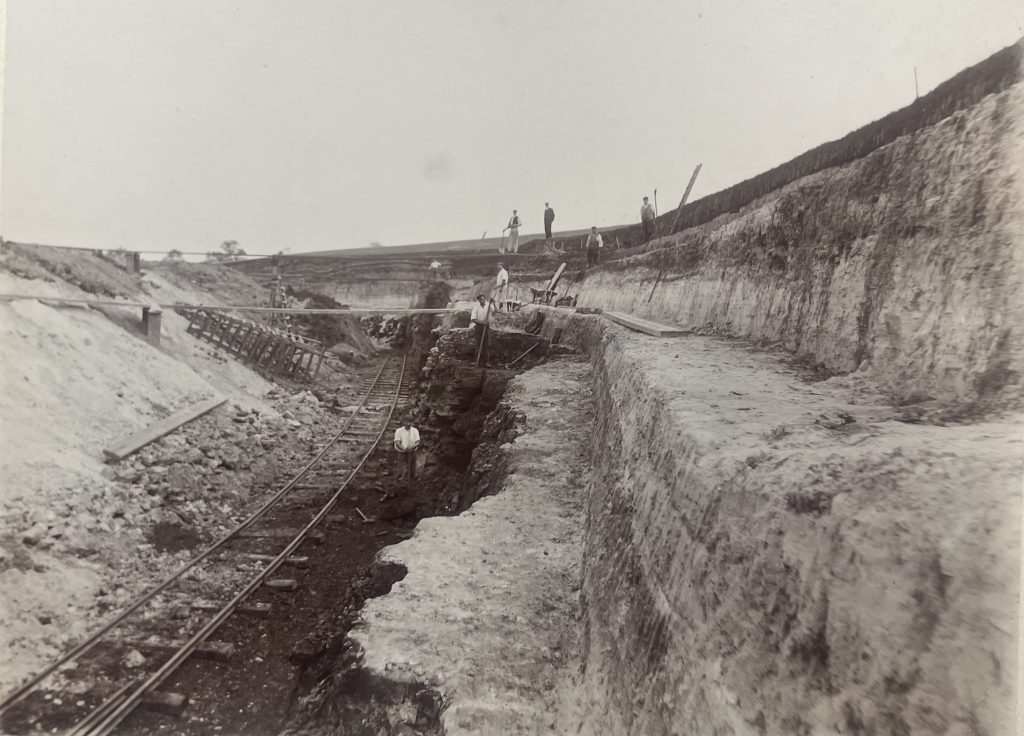
A early image of a Cranford surface mine around 1903
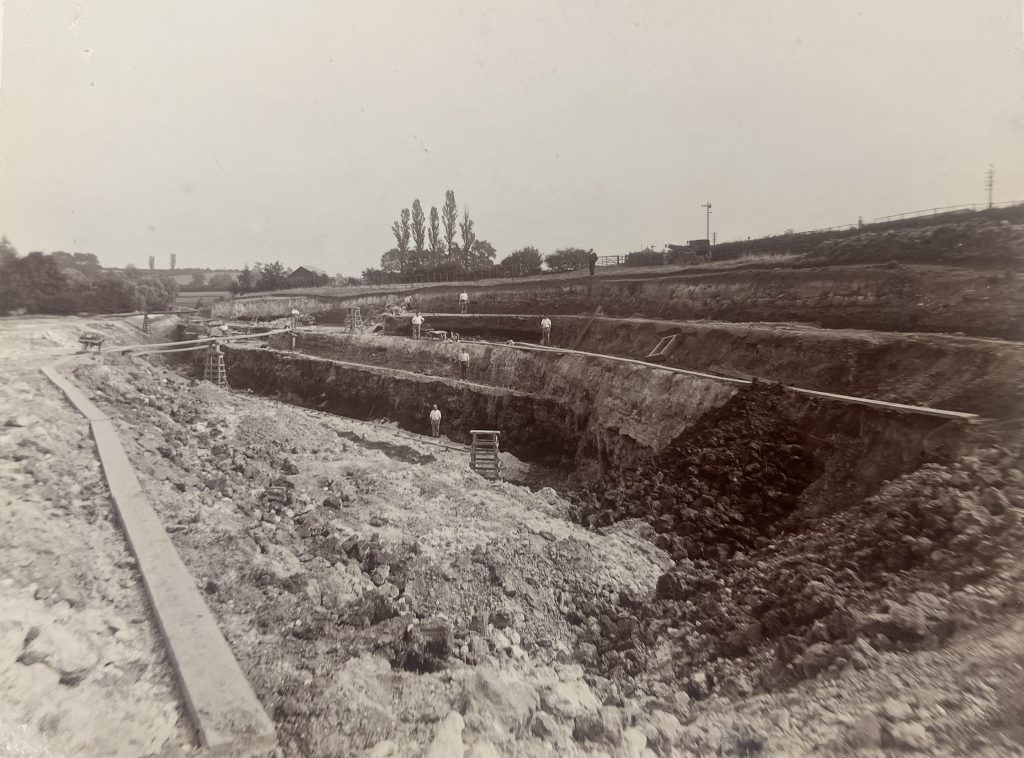
Cranford pit north of fitting shop 1905 , this image shows the method of working very Cleary .
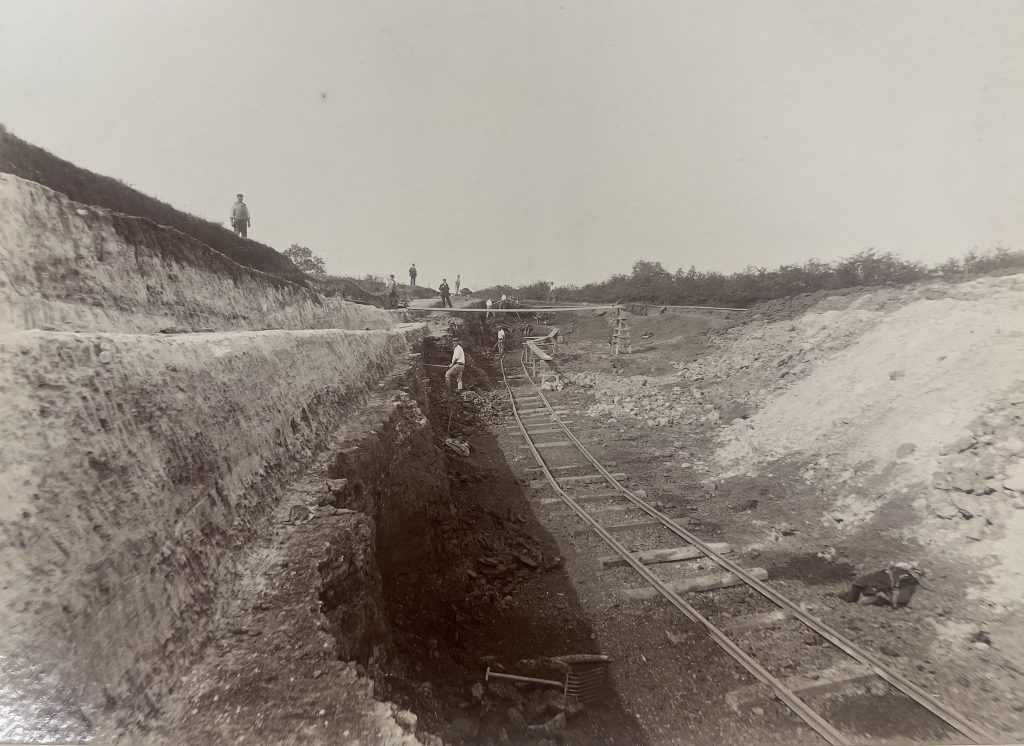
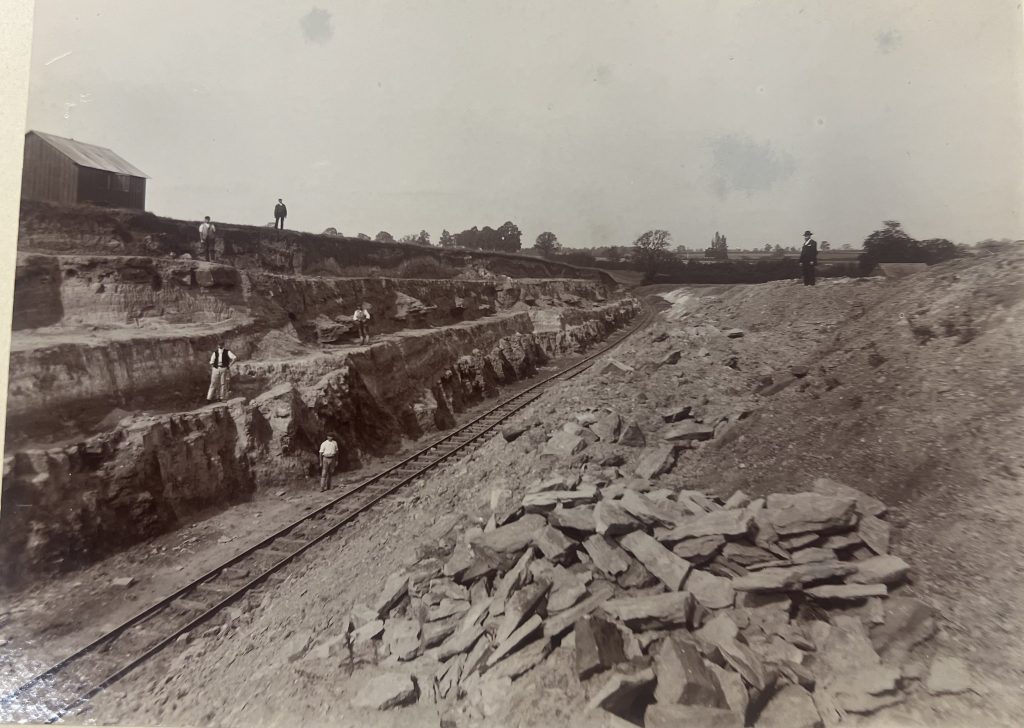
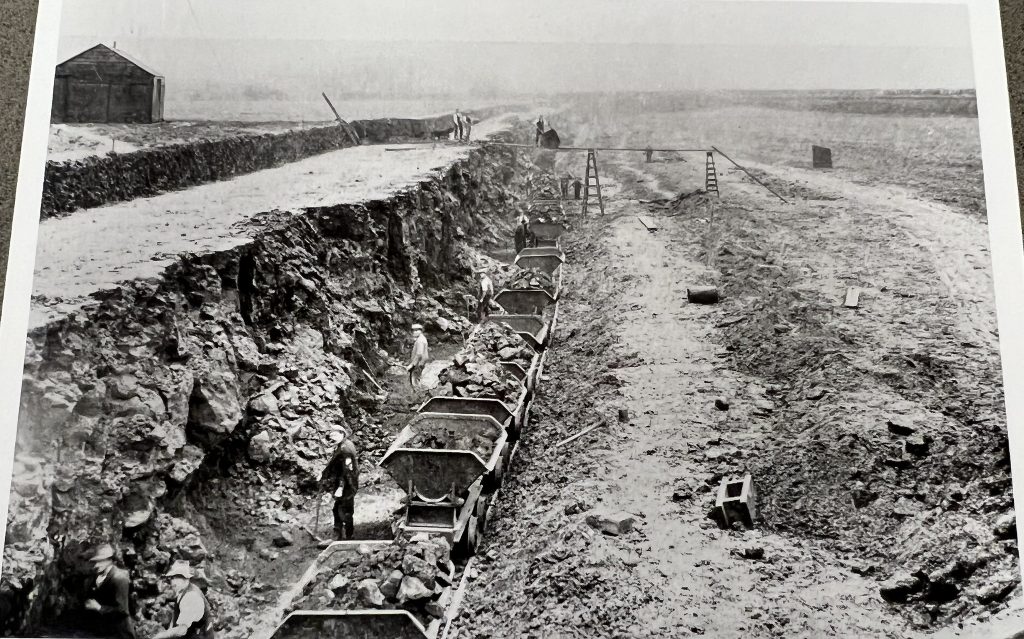
3 donated images which are marked as “Cranford ?”
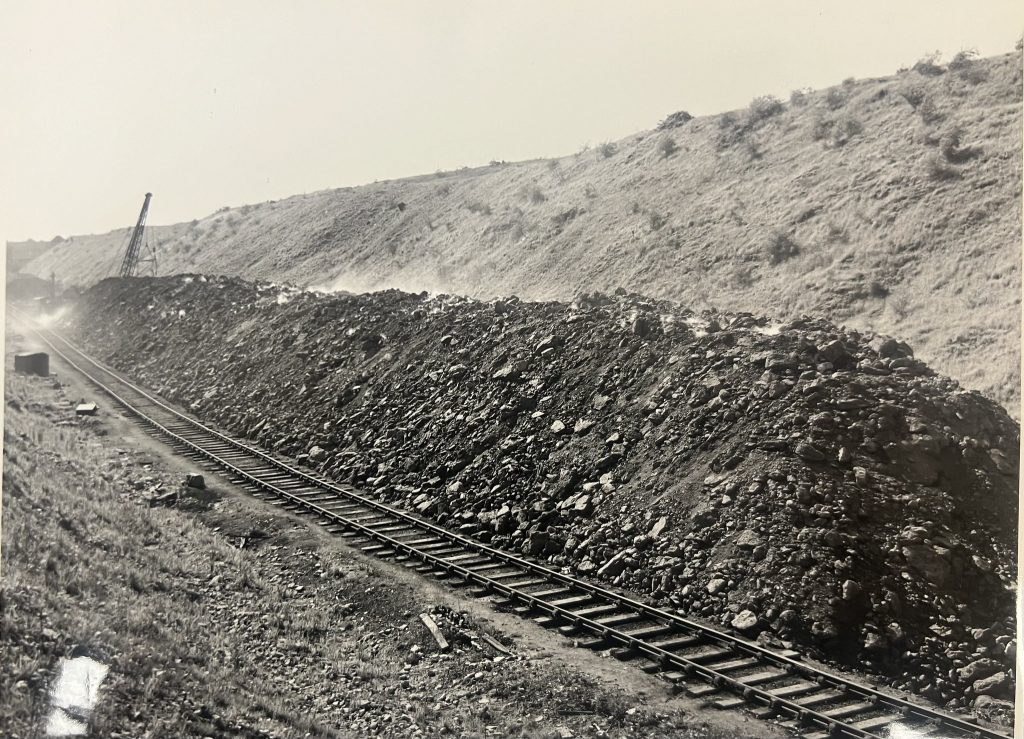
Cranford cally banks can be seen in the image above, This saved a lot on transportation costs .
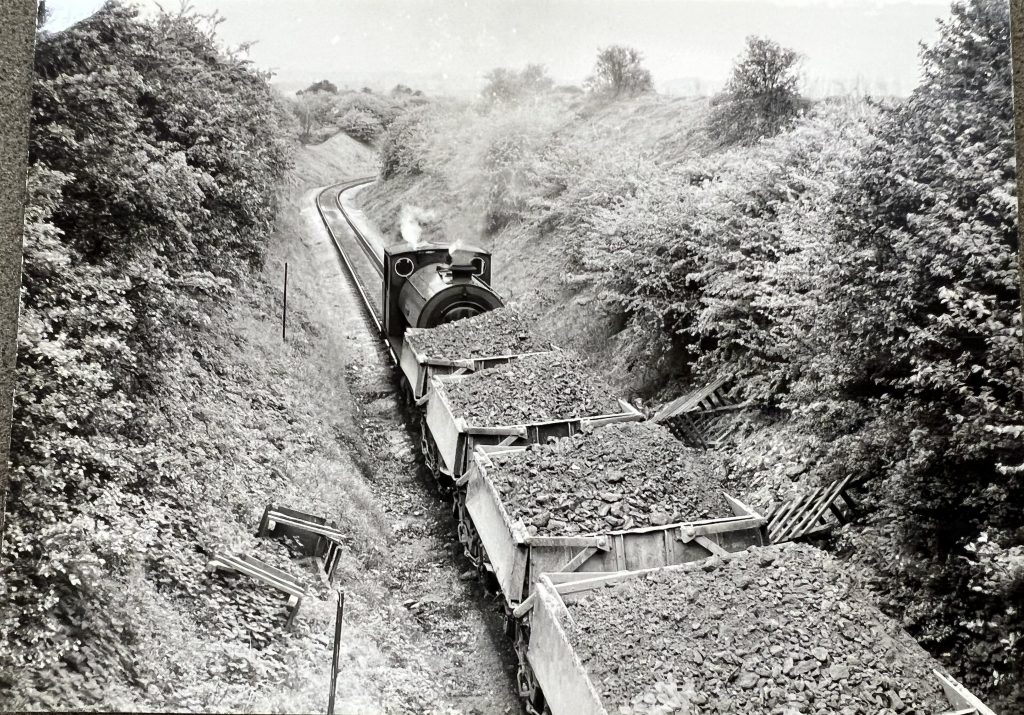
A loco shunting the fully loaded wagons between Cranford and Twywell , note the trestles for loading laying beside track.
